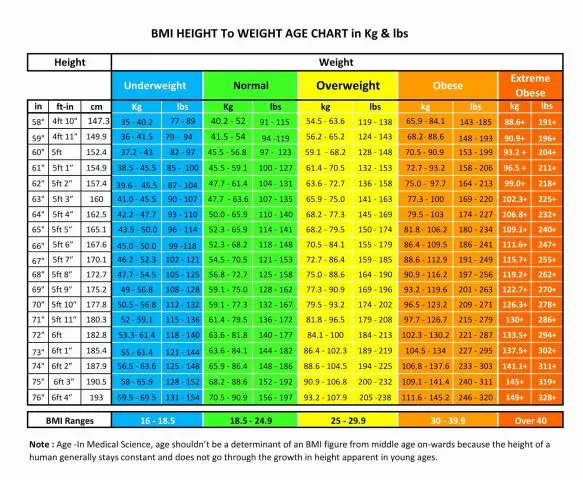We are reader-supported & may earn a small commission at no extra cost to you, when you buy through links on this site. This helps us to provide you with free and helpful content. The content of this site is informational only & is no substitute for medical advice, diagnosis or treatment. Always seek the advice of a doctor before using any of the information/products mentioned on this site.
Table of Contents
Metabolic Confusion Diet Overview
The metabolic confusion diet is an eating style that is not quite the same as most other weight loss plans. Rather than focusing on a set number of calories every day, you alternate your day by day calorie admission.
In spite of the fact that it is plainly a calorie limitation diet, it takes into account greater adaptability on an everyday premise. Defenders of the eating regimen likewise trust it helps “trick” your metabolism into working harder and, accordingly, causes you to get thinner.
The metabolic confusion diet is a way of dieting that is promoting doing cycles between low calorie days and high calorie days. While it offers more freedom compared to some traditional fad diets, keep in mind that it is still a restriction diet which may isn´t sustainable in the long run.
The prevalence of the metabolic confusion diet is rising, and you might be puzzling over whether you should attempt it.
This article reviews the metabolic confusion diet and whether it really assists with weight loss. Let´s examine its advantages and disadvantages.
>> UGLY Plant [Featured On Dr. Oz] Made This Mother Lose A Jaw-Dropping 59 Pounds. Click HERE To See Her Testimony <<
Metabolic Confusion Diet Review
The metabolic confusion diet is otherwise known as calorie cycling and calorie alternating.
It’s an eating less junk food style that permits you to shift back and forth between unhealthy and low calorie days or timeframes. It additionally suggests customary exercise, however it doesn’t have severe exercise necessities.
One approach to utilize the eating routine is shift back and forth among high and low calorie admissions each and every other day. On the other hand, you may eat unhealthy dinners for a week and afterward eat altogether less calories the next week.
High and low calorie days will appear to be unique for every individual. Despite the fact that there’s no conventional rule, most projects propose around 2,000 calories or more on higher admission days and close to 1,200 calories on low admission days.
The metabolic confusion diet is like changed substitute day fasting, which includes eating 25% of your ordinary calorie admission one day, trailed by a day of eating anything you desire.
Also, the metabolic confusion diet is intended to keep your metabolic response “on edge” because of differing food choices.
Strangely, diets like these have been connected to better weight management and long term sustainability, since they permit you to take a pause from low calorie eating .
Nonetheless, a prominent contrast of the metabolic confusion diet is that it permits moderately more calories on low calorie days. Expecting most people need 1,600–3,000 calories each day, 1,200 calories would liken to around 40–75% of your typical admission.
While this is as yet a prohibitive eating routine, defenders trust it considers greater adaptability and all the more normally coordinates with a commonplace eating style. That is, occasionally you may eat more and others you may eat less because of elements, for example, your timetable and craving levels.
How Long Does It Take To Confuse Your Metabolism?
A common plan for 2 weeks would look like 11 days of low-caloric intaked, followed by three days of high-caloric intake. The purpose of doing this is to force your metabolism into a weight loss pleateau by resetting your metabolic response through calorie and macronutrients cycling.
Does Metabolic Confusion Actually Work For Weight Loss?
The metabolic confusion diet, additionally ordinarily called calorie cycling, supports day by day exercise and eating below your every day calorie needs. Consequently, you’ll probably be in a calorie shortage that will prompt weight loss over the long haul.
Advocates of this eating routine case that shifting back and forth among high and low calorie days will “trick” your metabolic response and make it work more diligently since it should adjust to changes in calorie admission.
While you can’t actually “trick” your metabolic response, you may help keep your metabolism from easing back.
Since you’re in a calorie shortage more often than not while on the metabolic confusion diet, you’ll probably shed pounds. However, the name is mistaken in light of the fact that this eating routine won’t “trick” or “deceive” your metabolic response.
Long term calorie limitation, which is a common thing in many weight loss programs, has been found to diminish your resting metabolic rate (RMR) through a cycle called versatile thermogenesis. This makes your body less powerful at consuming calories.
Advocates of the metabolic disarray diet trust it maintains a strategic distance from this adverse consequence by permitting your body occasional breaks from calorie hardship, consequently forestalling metabolic transformations that ruin weight loss.
One examination from 2014 backings this thought. The investigation contrasted conventional calorie limitation and calorie moving more than 42 days. One gathering of individuals devoured 1,200 calories each day, while the other limited their calorie consumption for 11 days and afterward had 3 days of unhindered admission.
Members in the calorie limitation bunch encountered a critical reduction in their RMR before the finish of the examination, while those on the calorie moving eating routine kept up their prediet RMR.
Additionally, those on the calorie cycling eating regimen lost altogether more weight, announced less appetite, and had more prominent adherence to the eating routine. The creators accept this way of eating considers more prominent adaptability, which makes it simpler to keep up in the long haul.
Then again, a 1–year great investigation in 100 members tracked down no huge contrasts in weight loss between individuals who followed a calorie cycling eating routine and the individuals who did customary calorie limitation.
This may propose that the eating routine’s adequacy diminishes with time, however researchers need to accomplish more exploration to examine further.
Taking into account that calorie moving considers more noteworthy adaptability and breaks from exacting consuming less calories, individuals who receive this way of eating may report more prominent fulfillment, making it a more economical choice for weight loss. In any case, more long haul research is required.
Most experts agree on that the most economical and sustainable weight loss plans, like “The Custom Keto Diet“, are those dependent on a nutritious eating routine and normal exercise to make a little calorie deficiency of close to approximately 500 calories each day.
The Pros And Cons Of The Metabolic Confusion Diet
PROS:
- Provides some Levels of Flexibility
Unlike conventional calorie limitation nutrition plans, the metabolic confusion diet permits you greater adaptability in your food decisions. Since there are no conventional rules, you can choose the number of unhealthy days you wish to have in a given time period.
This additionally makes it simpler to appreciate food-related events like birthday events, occasion suppers, and gatherings. The more adaptable an eating regimen is, the almost certain you are to follow it over the long haul.
- May reduces appetite
Dependend upon how you decide to follow the eating routine, you may encounter less appetite. Following a low calorie diet long haul will leave you feeling eager and tired on the grounds that your body will not get sufficient energy for its every day capacities. You’ll probably encounter body signals urging you to eat, for example, stomach aches and low energy.
This may prompt undesirable compensatory practices, for example, binge eating, which are a common thing when following fad diets.
Not at all like cheat days, which are intended to permit you to eat limitless measures of food, frequently to the purpose of feeling overfull, the metabolic confusion diet is intended to control your calorie intake even on feast days, preventing you from overeating.
Eventually, this may help keep your body from feeling depleted, battle off hunger, and forestall overeating and binge days. In any case, you may have to eat in excess of 2,000 calories on higher admission days, contingent upon your age, sex, body size, and movement levels.
Despite the fact that it’s as yet a prohibitive eating regimen, the metabolic confusion diet considers “breaks” from low calorie days. Contingent upon your calorie needs, this may consider more prominent adaptability, less craving, and less sensations of hardship.
CONS:
- Quite restrictive
You can have a couple of high caloric days on this eating regimen, yet more often than not you’re needed to follow a severe low calorie diet of close to 1,200 calories each day.
This self-assertive calorie proposal is risky on the grounds that it doesn’t consider singular contrasts like age, sex, body size, and movement level. Without representing these, you could seriously underfuel your body.
Profoundly restrictive eating regimens like this one will be difficult to support long haul because of sensations of hardship, craving, and absence of happiness. The best weight control plans are those that are fulfilling, agreeable, and simple to follow, like “The Custom Keto” Diet.
- Still not enough research
In spite of the fact that the hypothesis of the metabolic confusion diet bodes well, there’s very little examination on the subject. Most accessible exploration centers around various forms of calorie moving and substitute day fasting, with little arrangement among examines.
Moreover, the human body is exceptionally modern and can without much of a stretch adjust to changes in calorie admission. Your metabolic response can’t get “tricked” as the name of this eating regimen recommends. Rather it shifts relying upon the number of calories you burn-through and consume every day.
- Probably not sustainable in the long run
Despite the fact that defenders of the eating regimen say it gives more noteworthy adaptability, it’s still profoundly prohibitive and might be difficult to follow long haul.
Despite the fact that the eating routine takes into account occasional breaks, you should follow a low calorie diet of around 1,200 calories each day more often than not. That being said, even the high caloric days will in any case be on the low end of calories for certain individuals, with most forms of the eating regimen suggesting 2,000 day by day calories.
Except if you’re including high caloric days frequently, like each and every other day, it’s impossible this will fulfill the yearning that outcomes from numerous low calorie days straight. At last, this might be too exhausting and difficult to maintain.
- Metabolic Confusion still is a restrictive diet
Despite the fact that it’s unique in relation to and more adaptable than numerous different eating regimens, the metabolic confusion diet is as yet a prohibitive eating routine that promotes quick weight loss.
As per research, most prohibitive eating regimens neglect to deliver long haul weight reduction. Hence, you may profit by following a more reasonable sound way of life that supports an unassuming calorie deficiency through a nutritious eating routine and expanded actual work.
Through this methodology, you may get in shape without the requirement for a restrictive eating regimen.
Conclusion
Albeit the metabolic confusion diet might be compelling for the time being, there’s insufficient research to support its long term benefits.
You may get more fit on the eating routine, however it very well might be difficult to follow for quite a while on the grounds that it’s extremely low in calories. In the event that you appreciate or need to attempt this eating style, it’s ideal to join more unhealthy days all the more frequently to try not to feel depleted and hungry.
For instance, you could attempt to add 2 or 3 more high calorie between lower calorie days during the week. This would furnish you with greater adaptability in your eating regimen, which could make you bound to stay with it long haul.
In any case, most examination has tracked down that the best and most manageable way to deal with weight loss is to arrive at a humble calorie shortfall of around 500 calories or less each day through eating generally natural food varieties and practicing routinely with the help of a solid diet plan, like “The Custom Keto” Diet. Check out how celebrities like Chaz Bono had incredible weight loss success with a ketogenic diet.

Dear Reader, have you enjoyed reading this article? Since 2020, we dedicate ourselves to help people all over the world to achieve their weight loss goals. Over the course of these years many of our readers have contacted us to tells us about their weight loss progress. This is what keeps us going. If you found this article useful, please consider sharing it.
Thank you – Your WLJ-Team
Greetings,
Your WLJ-Team








